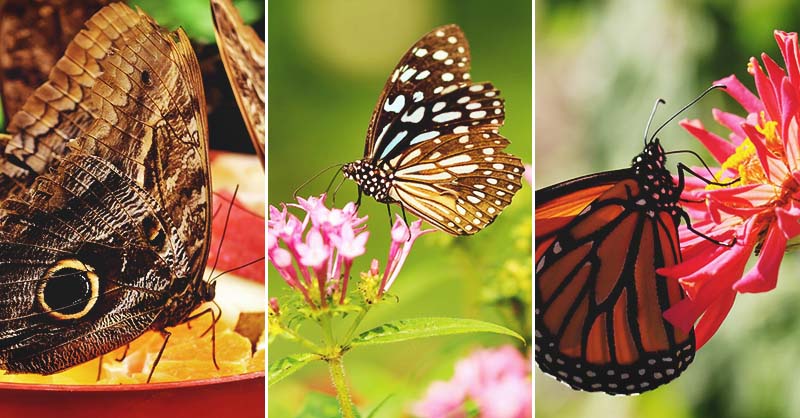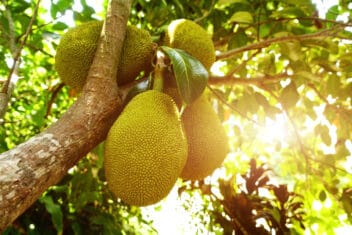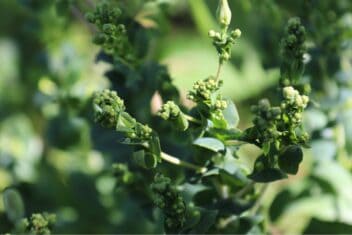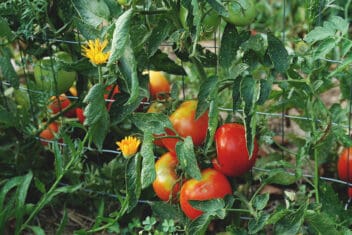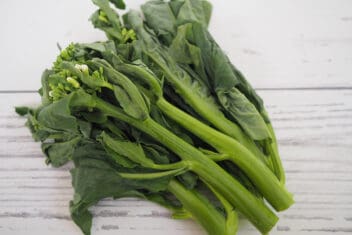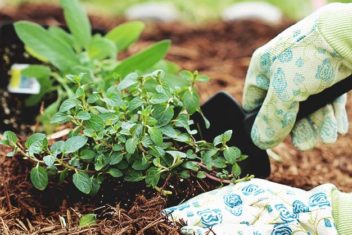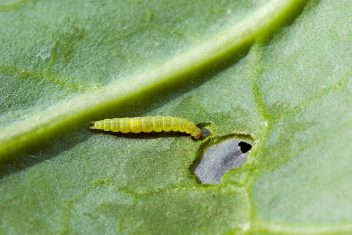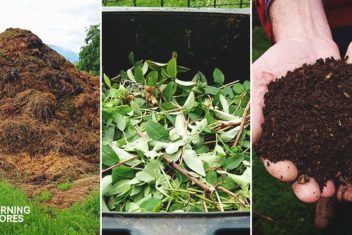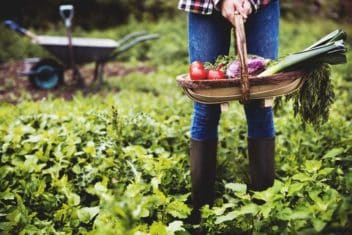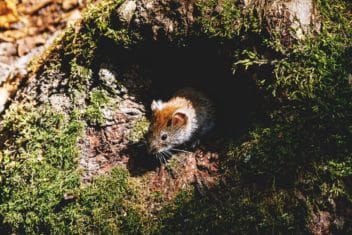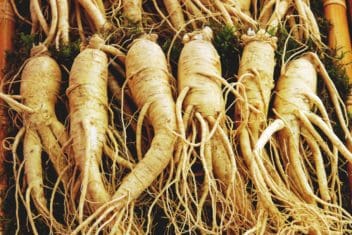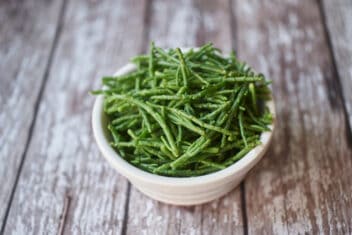Do you love looking out into your garden and seeing beautiful butterflies flying around?
Are you curious why certain flowers draw butterflies while other varieties don’t? You can understand how to attract butterflies once you know what sustains them.
They’re interesting creatures with a unique way of feeding. I’m going to walk you through how butterflies eat, what they like to munch on, and how you can use this for your advantage.
Here’s what you must know about a butterfly’s diet:
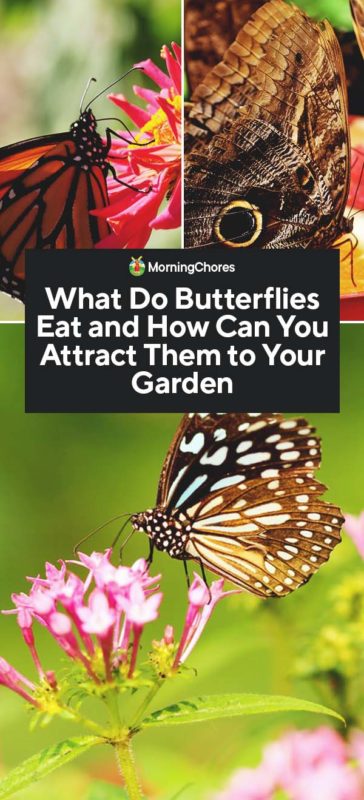
How Do Butterflies Eat?
When you look at a butterfly from a distance, there is no real way of knowing how they eat. They appear as graceful little creatures that float through life.
However, they eat without us knowing it. Butterflies stick to a strict diet of fluids. They have a tongue which is long enough to wrap around their head like a bendy straw.
When they’re ready to eat, they unroll their tongue and suck liquids up with it. Due to their tongue working like a straw, they stick with liquids.
The technical term for their tongue is proboscis.
What Do Butterflies Eat?
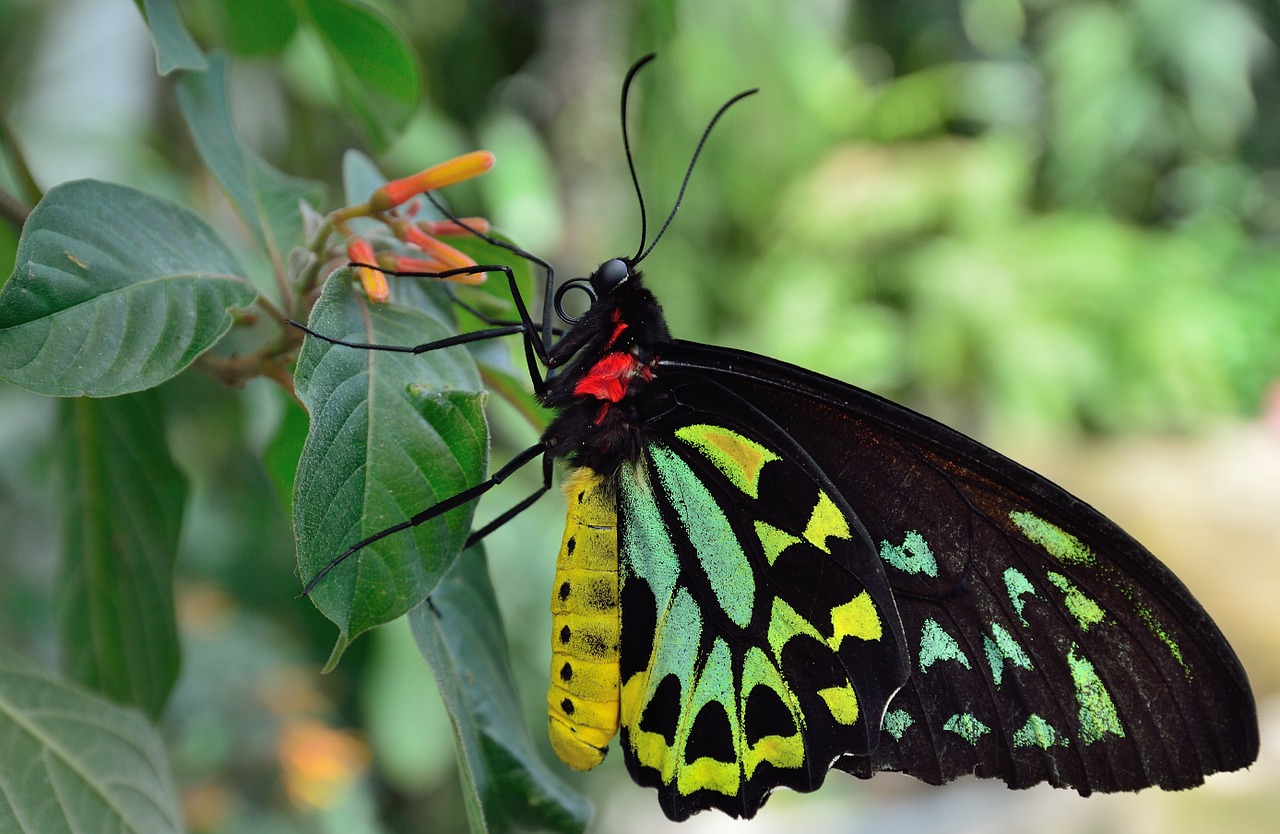
Now that you know how the butterflies get food into their system, you wonder what do they like to feed on? The answer is quite shocking.
Butterflies don’t only dine on delicate, pretty flowers. They find less appealing things delightful as well. Here’s what butterflies are looking for on their buffet:
1. Water
If you’re a living creature on this planet, you must have water to survive. Otherwise, you won’t last more than a few days.
Butterflies are no different. They must have water to survive. It’s easy to drink with their tongue, and it’s vital for their survival. Give them water by placing a birdbath in your yard.
2. Flowers
You see butterflies floating around your flower garden because they drink the nectar. You can plant a variety of flowers for butterflies in a pollinator garden.
Some of their favorites are butterfly bushes, lilacs, coneflowers, sage, and sunflowers. If you have these planted around your property, you should have frequent butterfly visitors.
3. Tree Sap
If you have trees in your yard, chances are you’ll have a few butterflies visiting your area. They enjoy drinking the sap from trees.
The sap is a sweet liquid that tastes great to butterflies but is also easy for them to drink with their proboscis.
4. Leftovers
This option may throw you through a loop. We consider butterflies to be gorgeous creatures who wouldn’t dine on anything we would deem gross.
We thought wrong. If you have a pile of decomposing animal feces on your property, butterflies will come along and sip the liquid from it for sustenance.
5. Fruit Juice
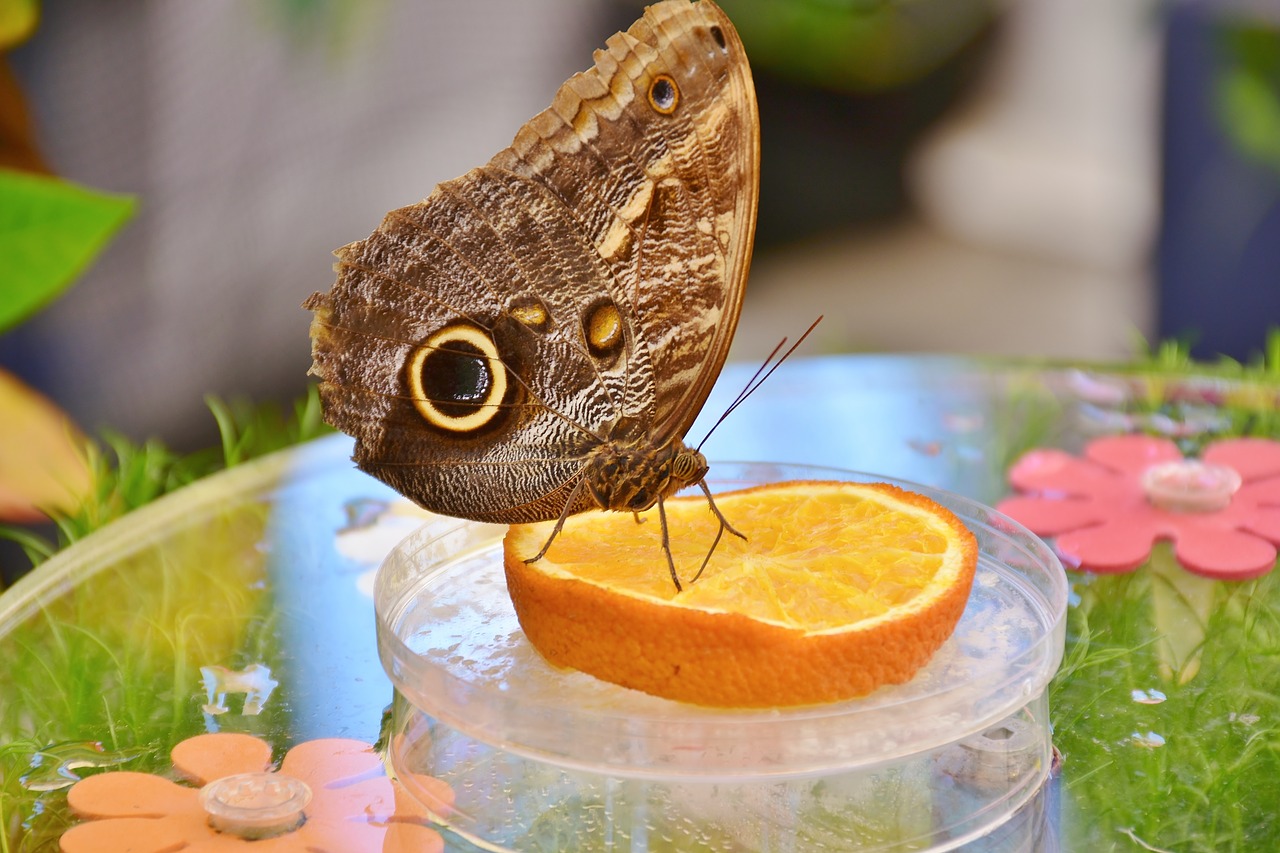
Butterflies enjoy sweet fruit juice from time to time. If you have a prosperous banana plant, you could squish a banana and leave the fruit outdoors for them to find.
They’ll sip the juice from a banana, orange, or watermelon. Leave it in a dish where they can have access to it, and they’ll be glad for the treat.
6. Fallen Fruits
Do you have an orchard or even a couple of fruit trees on your property? They’ll help draw butterflies because they’re a source of food.
The butterflies won’t only enjoy the fresh fruit on your tree, but they’ll enjoy the rotting fruits which have fallen to the ground. They’re easy to suck the nectar out of, and nectar is one of their favorite food sources.
7. Pollen
When you hear the word ‘pollen,’ your mind probably goes straight to bees. Multiple other species use pollen as a food resource as well.
Butterflies are one of these creatures. They will dine on pollen as a food source. Therefore, anything you plant which attracts bees should also attract butterflies.
8. Butterfly Food
You may be aware there’s hummingbird food meant to go in a hummingbird feeder to attract them to your property.
The same technique can be used for butterflies too. You can purchase butterfly food and dissolve it in water. Place it in a feeder, and you’re ready for your flying visitors.
9. The Hungry Little Caterpillar
You’re probably aware of the great kid’s story, The Very Hungry Caterpillar. As a homeschooler, we’ve read this book more times than I care to discuss when my kids were learning how to read and about butterflies.
Though it’s a fiction book, it does get one thing right; caterpillars need food with specific nutrients to grow. They won’t eat cake and ice cream, but instead, they dine on plant leaves, seeds, and seed pods. If you wish to attract butterflies, you must consider necessary food sources when they’re in their larval stages.
Is There Anything Else I Can Do to Draw Them to My Garden?
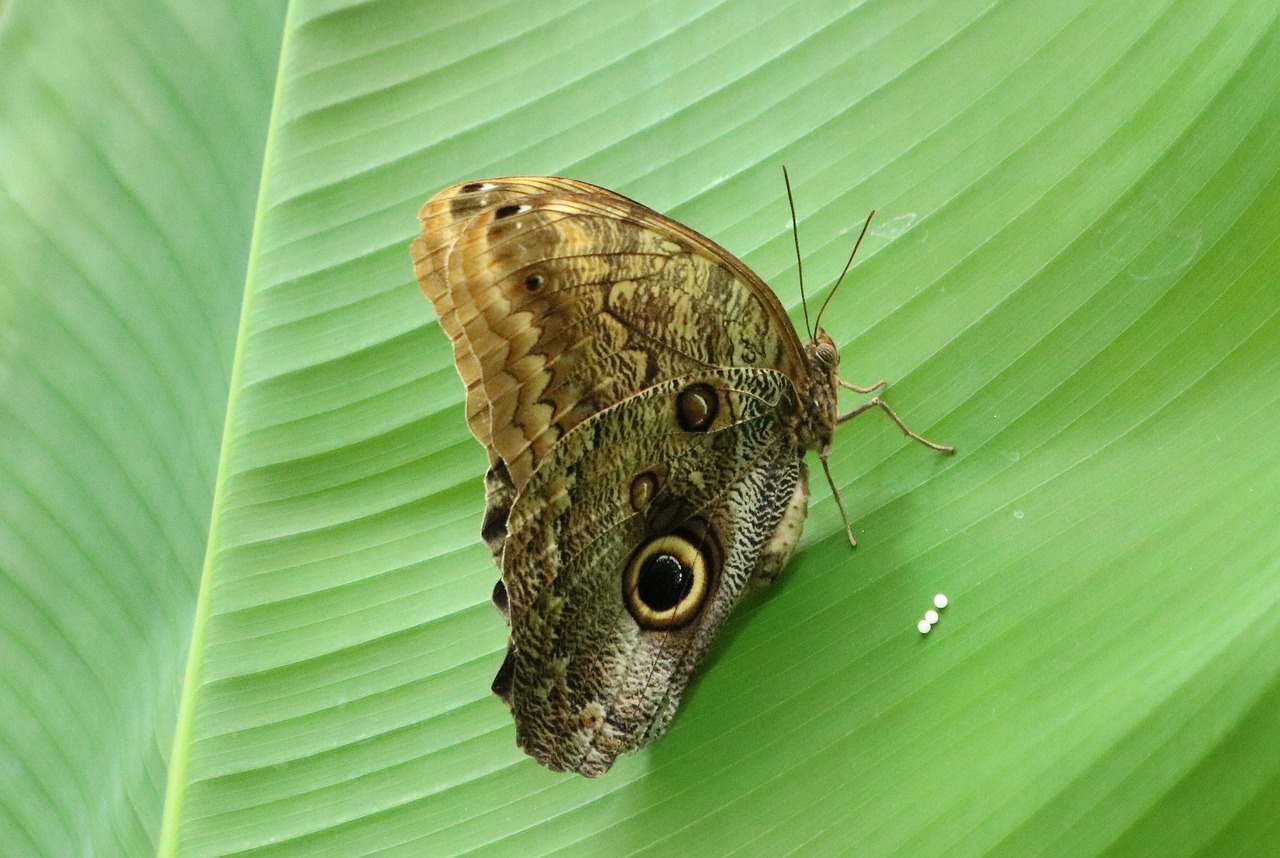
My mother-in-law loved butterflies around her garden. It brought her a great deal of joy. If you desire to draw butterflies to your garden too, certainly plant or provide the food sources mentioned above.
However, you can take one additional step to draw them in. Butterflies are specific about where they lay their eggs.
You must research which variety of butterflies is prevalent in your area. Once you have this information, you can research which type of plant they like to lay their eggs on.
These plants are referred to as a ‘host plant.’ By planting host plants in your garden or around your home, you’re providing a safe place for butterflies to lay eggs for the next generation.
Make sure you have ample caterpillar food sources planted around your home or garden as well. It will make your home a butterfly haven from start to finish.
You now know what do butterflies eat, how they eat, and how you can encourage and provide for butterflies in all stages of their lives.
The old saying, “If you feed them, they will come” is correct. Put it into action for butterflies, and your home and garden should be a great place to watch them and enjoy the beauty only nature can provide.
